How to play guitar like... Matt Bellamy
17 tips, techniques and tricks to master the Muse frontman's playing

Introduction
Matt Bellamy is as brilliant a guitarist as he is a composer. Here’s some Muse you can use to master the techniques and tricks that will fill any supermassive track hole. Browse the gallery to see our full Matt Bellamy lesson, including Muse-inspired chords, scales, riffs and lead licks...
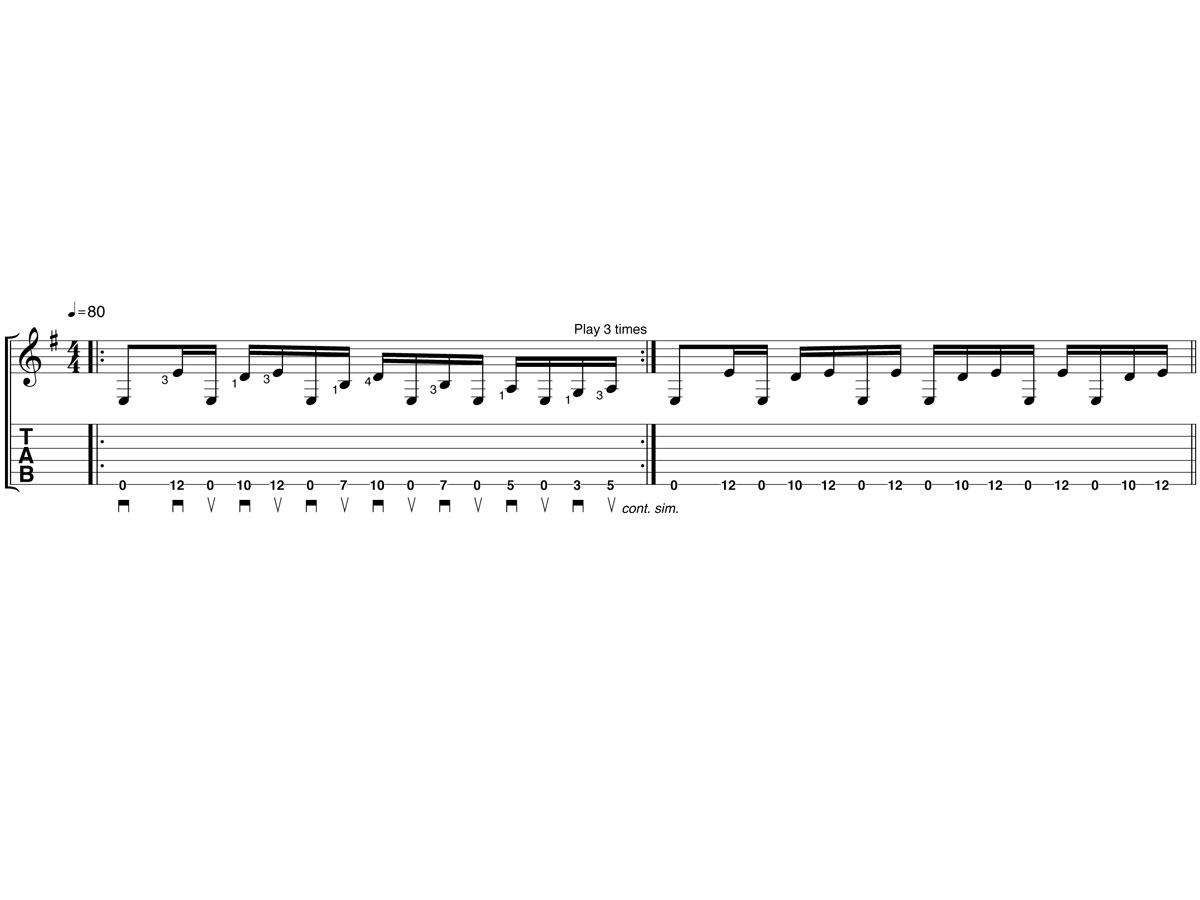
Heavy riffing
Heavy riffing is a vital part of Matt Bellamy’s style and tracks such as Hysteria, Stockholm Syndrome and Citizen Erased feature repeating open-string ‘pedal’ notes.
Our Matt Bellamy-style 16th-note riff uses the E minor pentatonic scale (E G A B D) along the length of the sixth string.
Heavy riffing tab (right-click to download)
Heavy riffing audio (right-click to download)
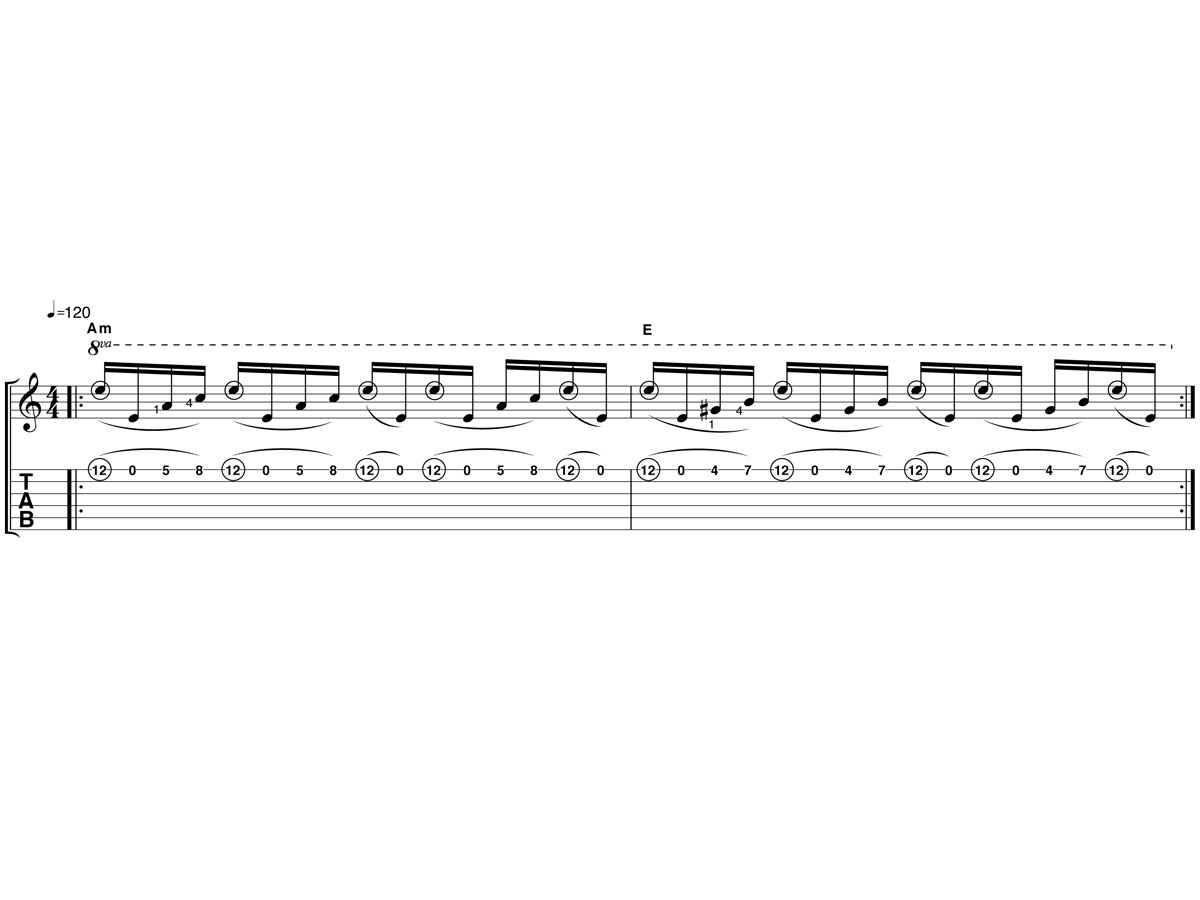
Tapping
One of Matt’s best known techniques is two-handed tapping, as used in wide interval melodies and solos in tracks including Invincible and new track Reapers.
Tap with either your first or second finger, and try to keep all the notes even in length and volume. Tapped notes are shown in circles.
Tapping tab (right-click to download)
Tapping audio (right-click to download)
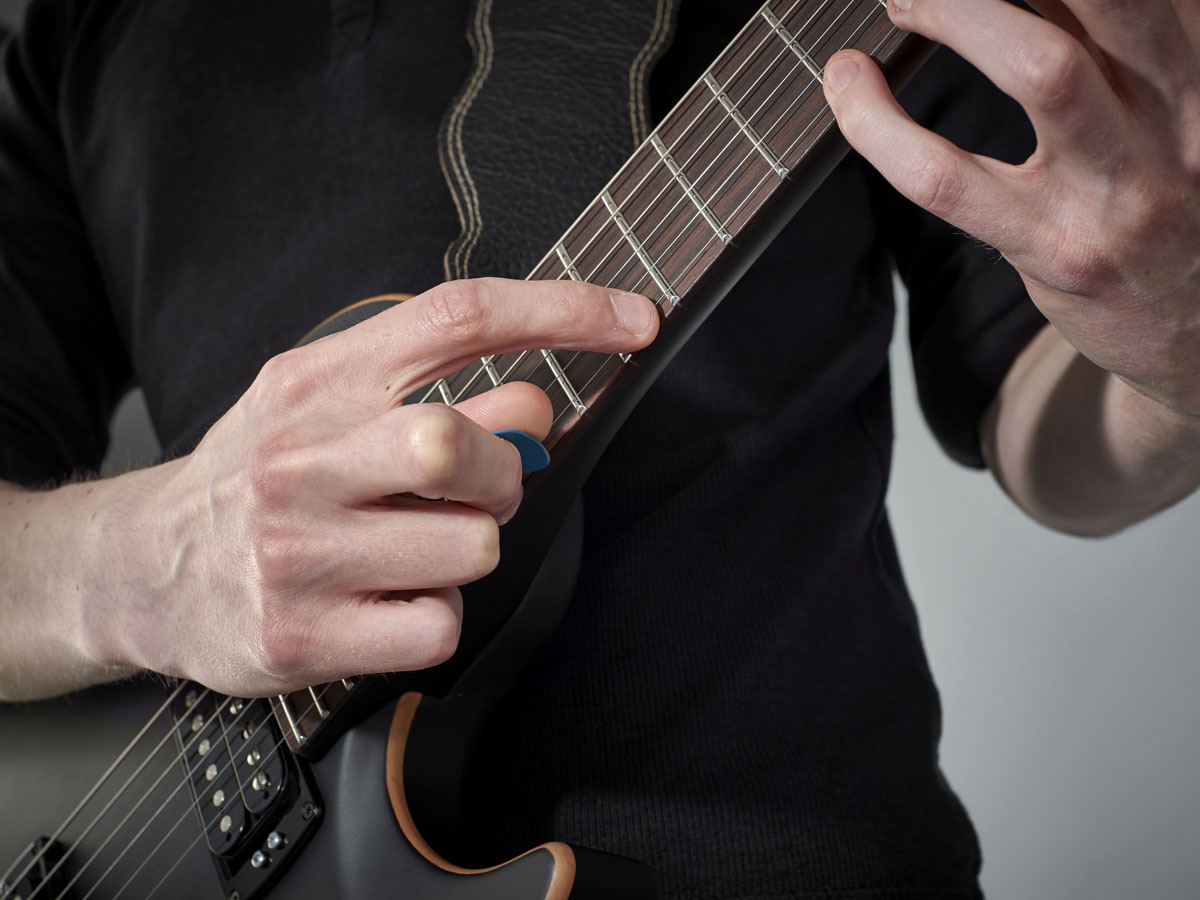
Tap-solution!
Get the Muse man's impressive EVH-esque tapping technique...
1. Keep hold of your pick
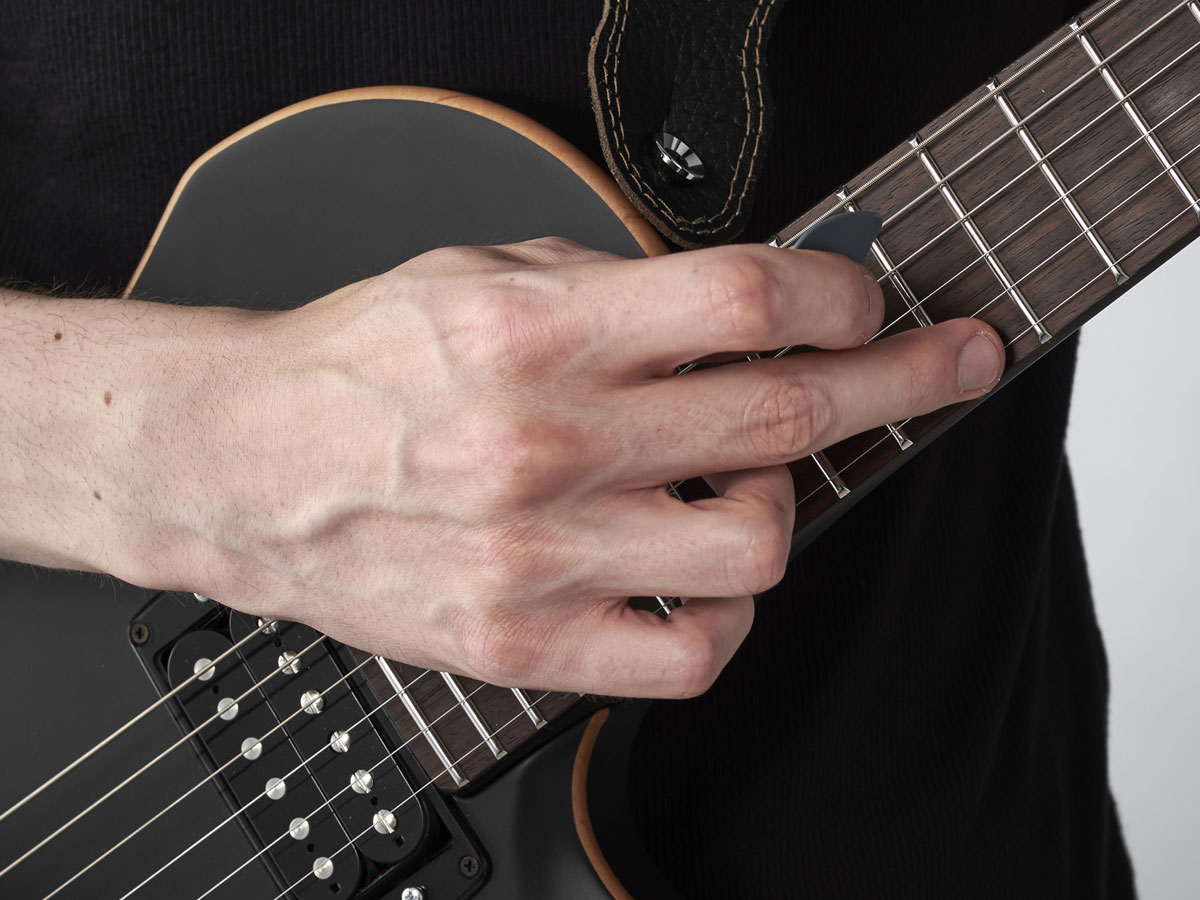
How you hold your pick dictates whether you use your first (pictured top) or second finger (above) to tap. Either way is fine, but remember not to put down your pick when you practise - switching from “normal” playing to tapping is often the most difficult bit!
2. Flick, but don't lift
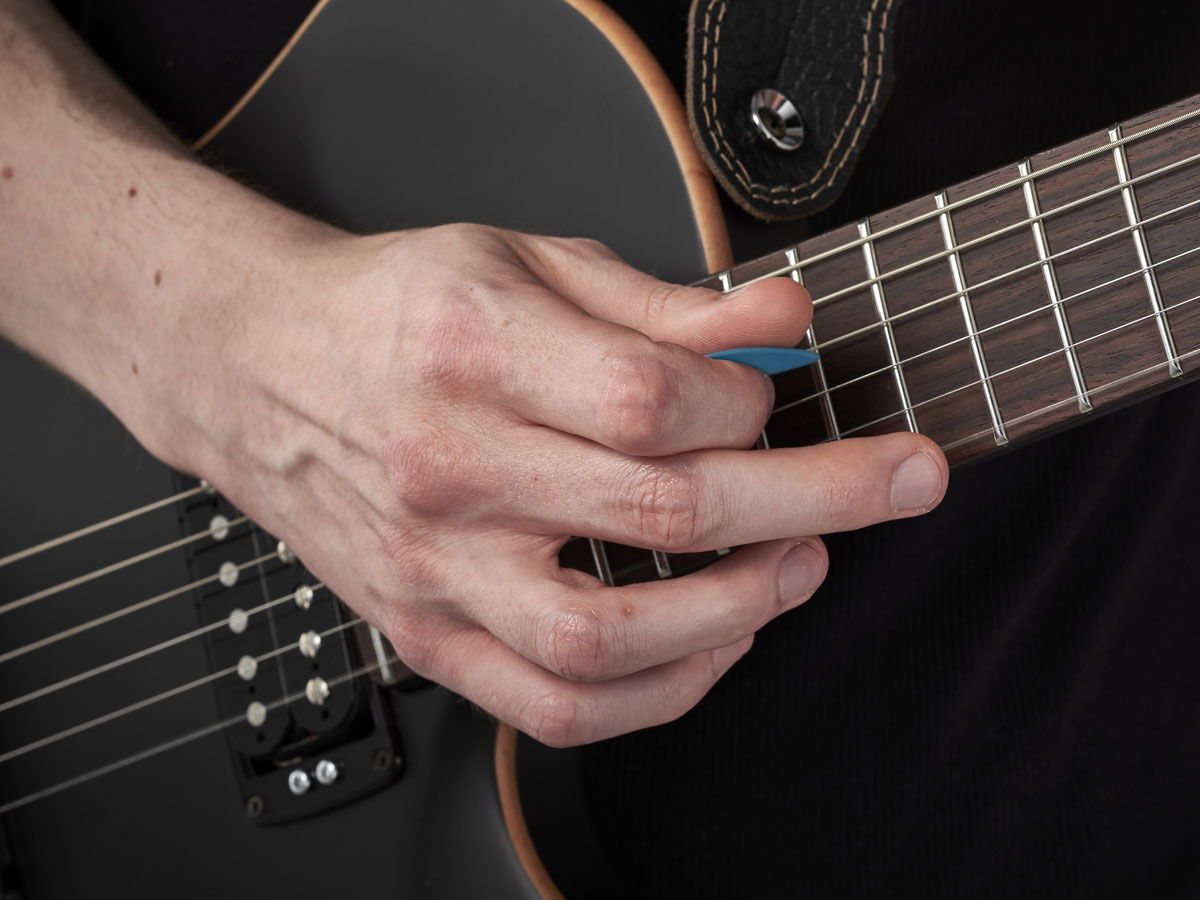
Tapping the string is easy, but get your lift-off wrong and the next note is likely to drop out- a sonic black hole, as it were. Try to flick the string up or down as you lift your tapping finger from the string. It should be a very small movement, but enough to deliver the note at a good volume.
3. Fretting is important too
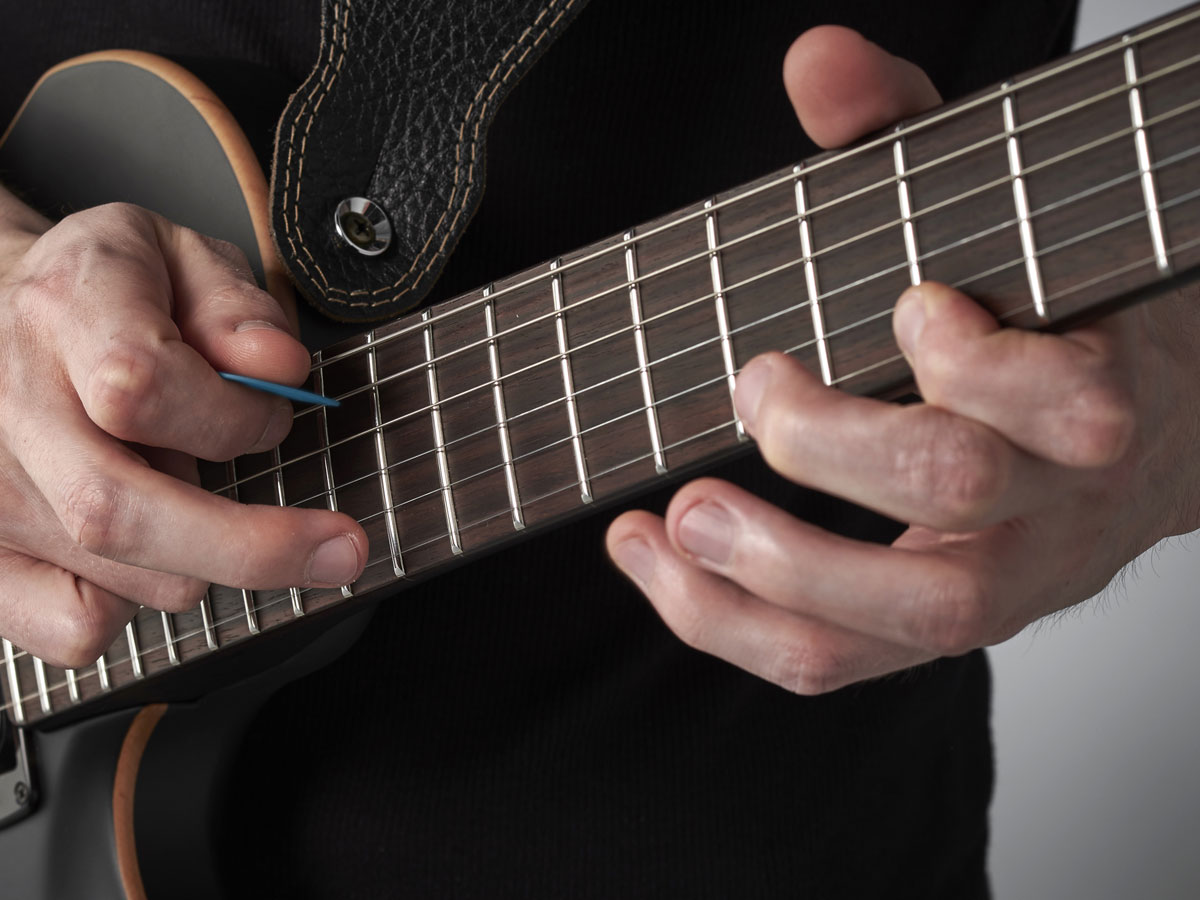
Legato techniques such as hammer-ons and pull-offs are part and parcel of tapping, often with open strings thrown into the mix, so it almost goes without saying that your fret-hand timing needs to be solid.
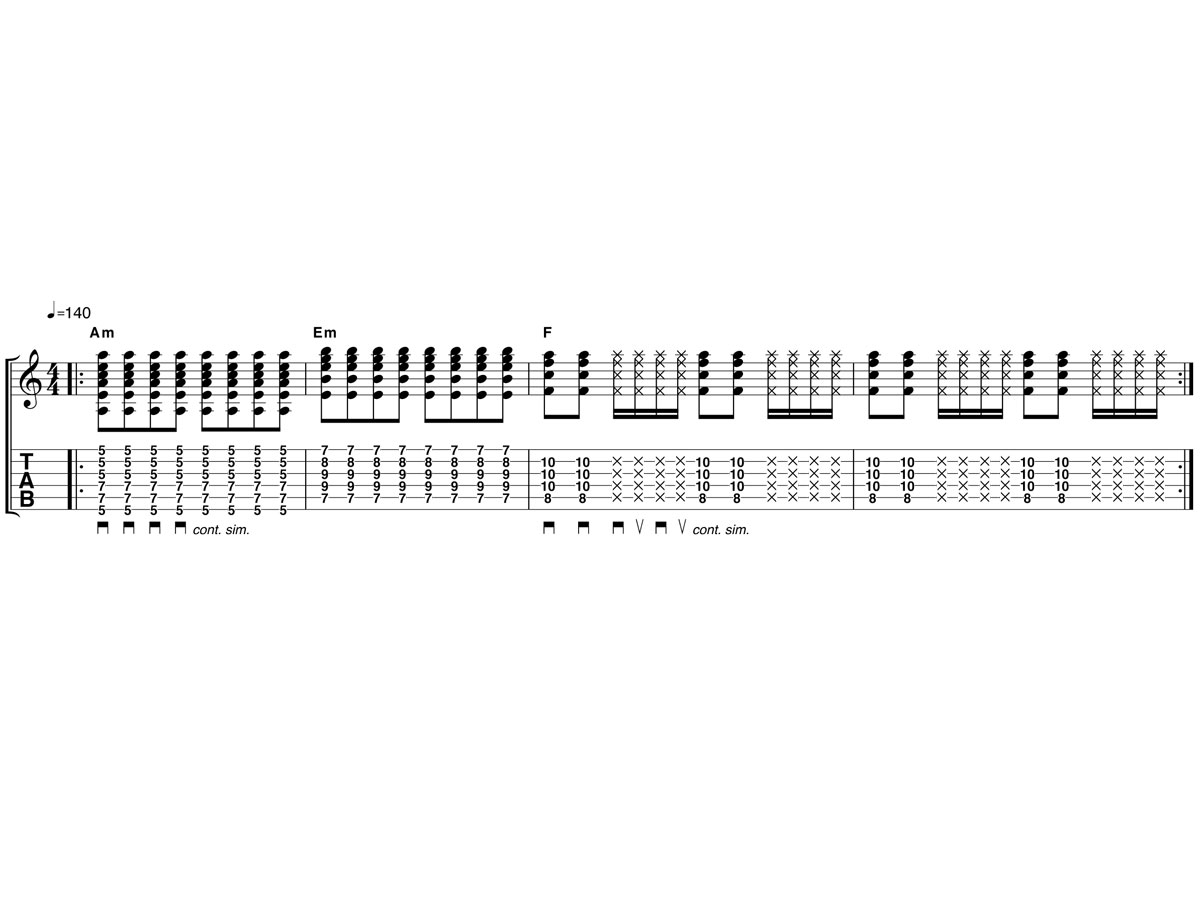
Trashy barre chords
Barre chords are the most simple and direct way to spell out the harmony of a song.
Matt often opts for this approach over powerchords - just check out songs such as Bliss and City Of Delusion. Use down-picking in bars 1 and 2 to set yourself up for a faster down/up approach from bar 3.
Trashy barre chords tab (right-click to download)
Trashy barre chords audio (right-click to download)
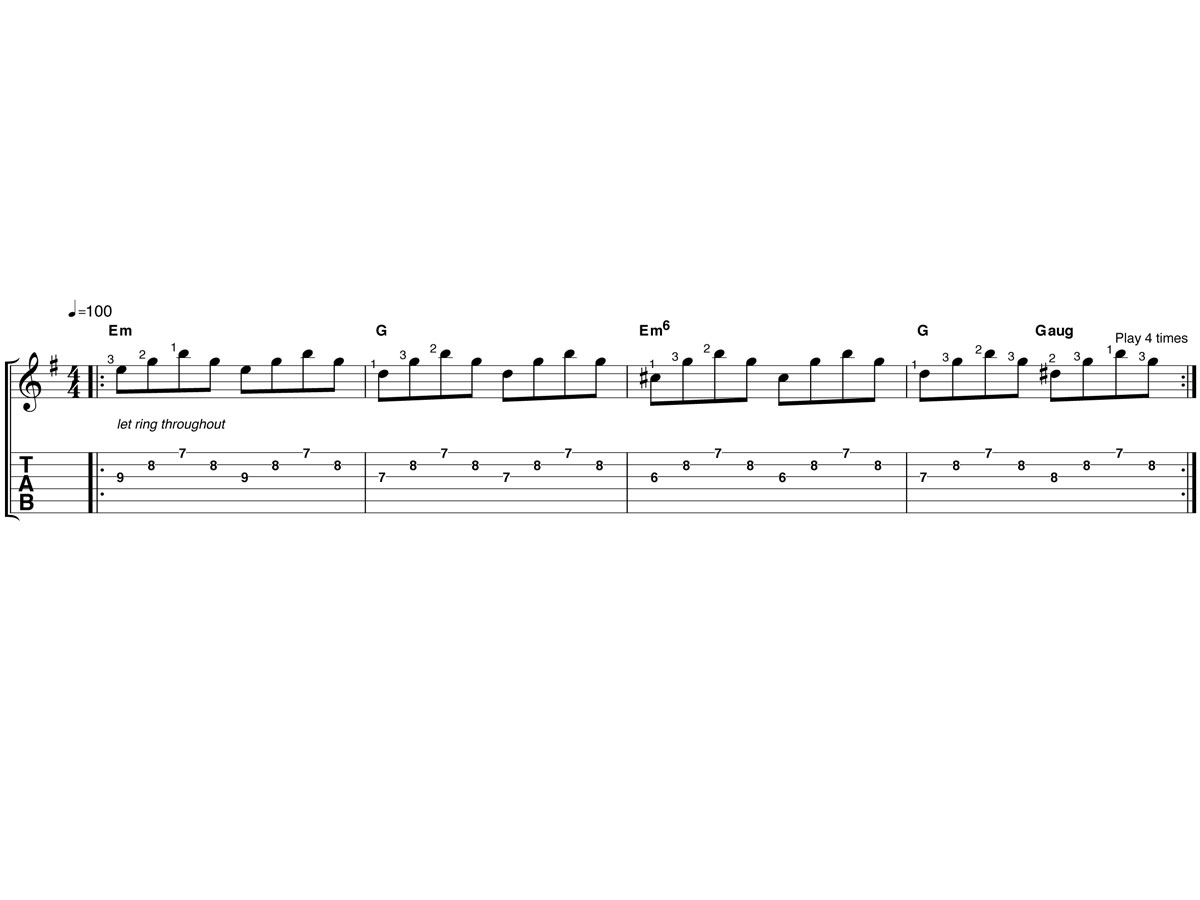
Arpeggios
A key part of Matt’s playing - mellow, ethereal Radiohead-like arpeggios - can be heard in tracks like Citizen Erased.
The chords we’ve used are typical Muse traits, too - Em6 and Gaug use notes from outside the key signature, creating a chromatic run (C# D D# E) along the third string as the chords change.
Arpeggios tab (right-click to download)
Arpeggios audio (right-click to download)
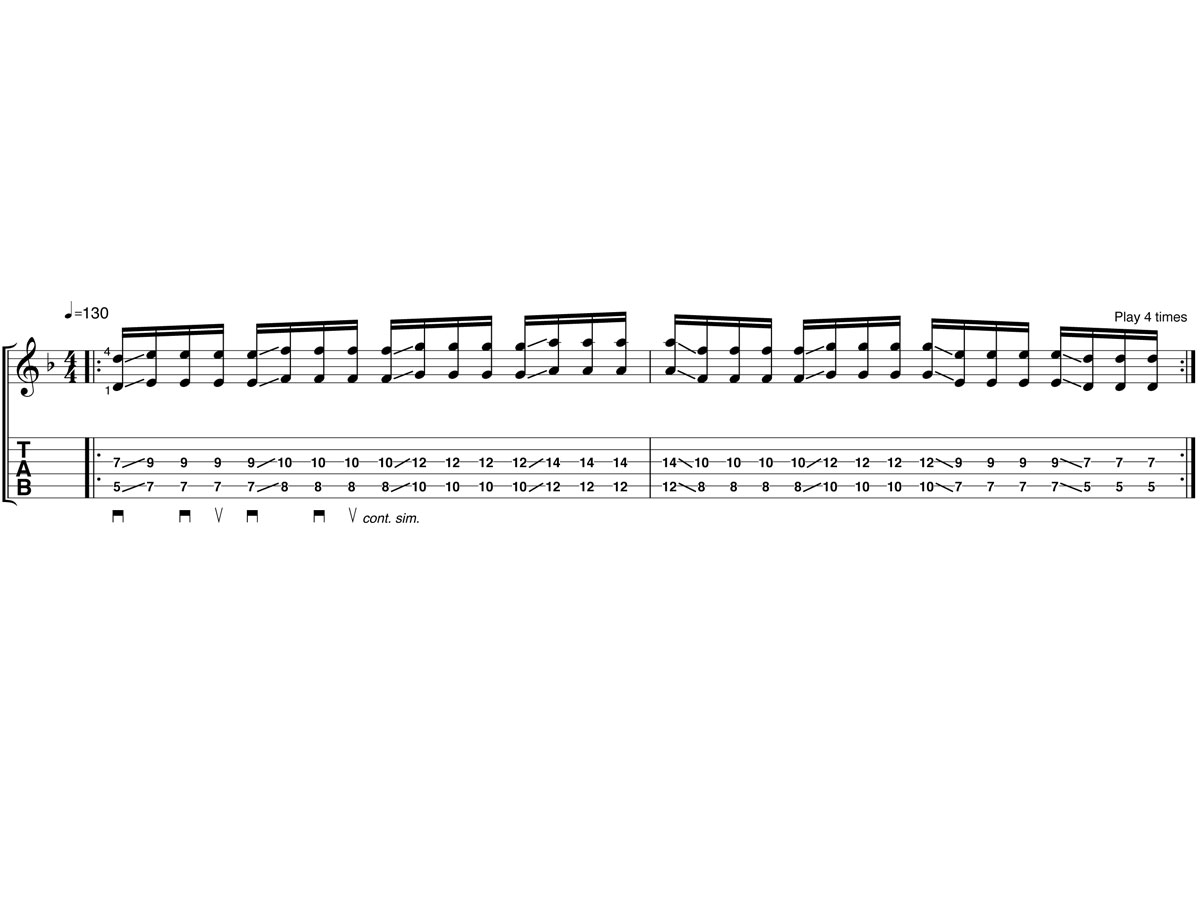
Octaves
When played with a dirty sound, octaves are reminiscent of the style of one of Matt’s biggest influences - Jimi Hendrix.
Matt uses octaves in tracks such as Time Is Running Out to fatten up melodic lines, so they become more like rhythm parts. The trick is keeping the idle strings quiet by lightly touching them with your fretting fingers.
Octaves tab (right-click to download)
Octaves audio (right-click to download)
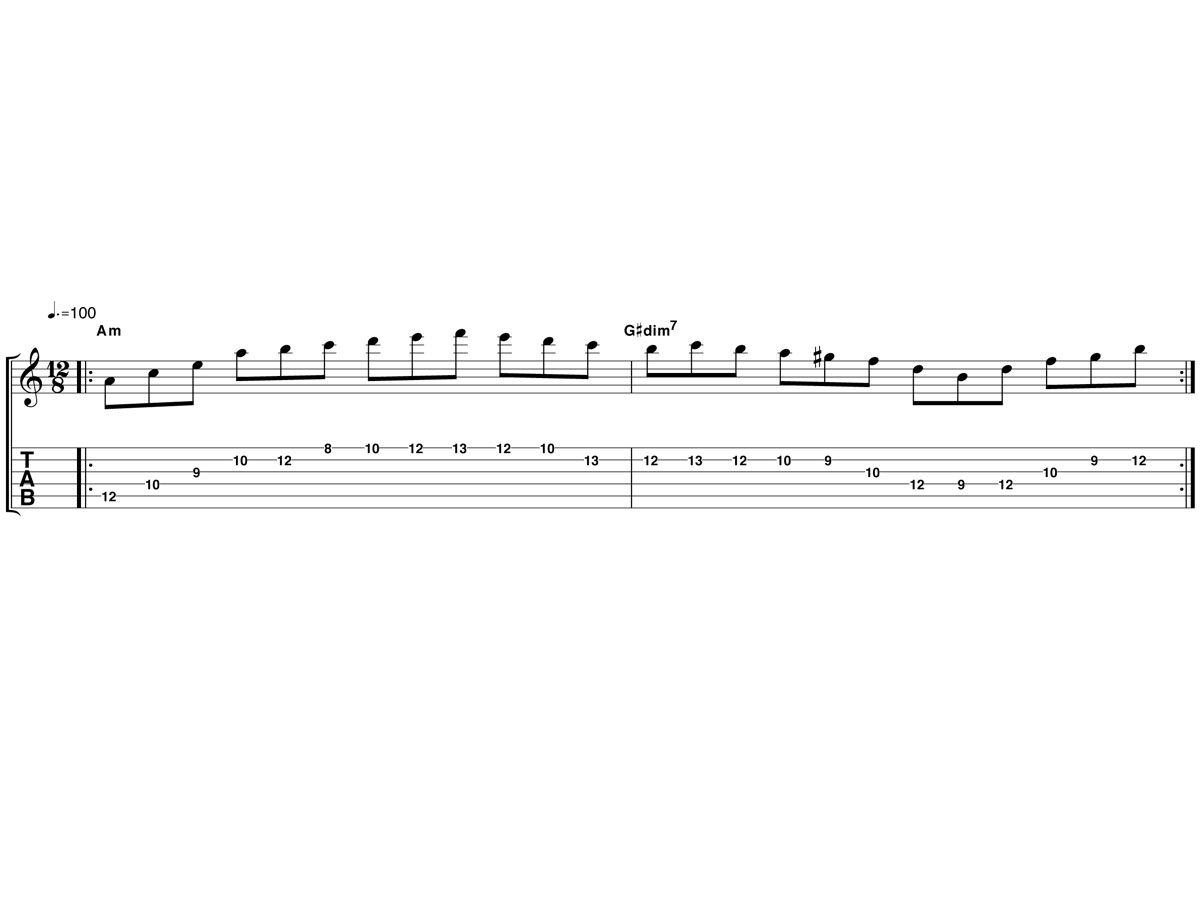
Classical-style arpeggios
The guitar parts in tracks such as Plug In Baby show Matt’s love of classical music.
These lines tend to use arpeggios based within the harmonic minor scale (1 2 b3 4 5 b6 7). We’ve used Am and G#dim7 arpeggios mixed in with other melody notes from the key for a typical classically influenced sound.
Classical-style arpeggios tab (right-click to download)
Classical-style arpeggios audio (right-click to download)

Classical chord progressions
Learn one simple four-chord Muse style progression and master some of Bellamy’s key-change tricks, as heard in New Born, Knights Of Cydonia and more...
Em to B - instant classical sound
Em to B is in the key of E minor (E F# G A B C D), but the B chord uses a note (D#) from outside the key. It’s a vital note because you change to E harmonic minor (E F# G A B C D#), the most classical-sounding scale. Try creating a Muse-style riff using this scale over Em and B.
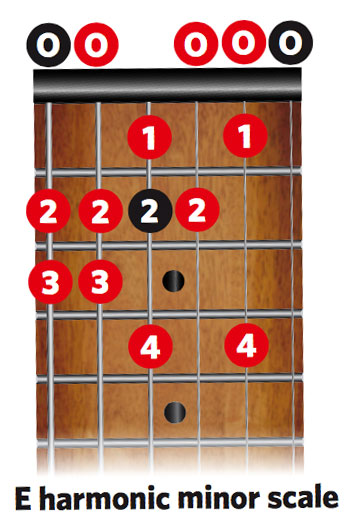
B to C - set up a key change
B to C might not seem like a remarkable sequence, but two major chords a semitone apart can only happen if you change certain notes in the key. So, together, B and C can give a feeling of movement and set up a number of potential key changes, depending on what chord you want to move to next.
C to G - resolve to a new root
This simple IV-I change in the key of G major generally sounds simple, safe and rested. So, why even mention such a basic sequence?
Well, by moving through B and C and coming to rest on G, Matt changes the key from E minor to G major. A new key ensures music takes ona different feel.
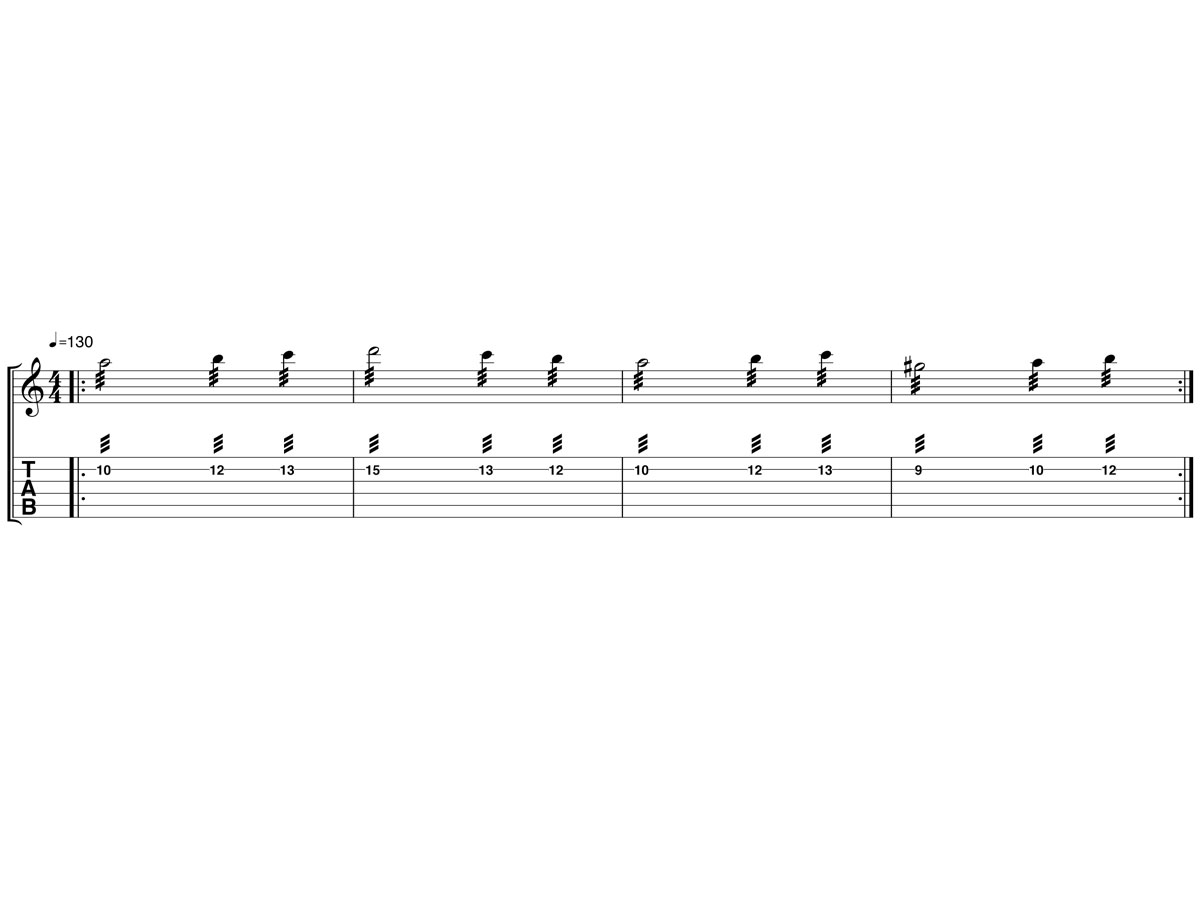
Tremolo picking
Matt's solo in New Born demonstrates one of his most trusted lead techniques - tremolo picking.
The idea is to alternate-pick notes on a single string as fast as possible, while maintaining consistent speed and picking intensity. Another great example is in Knights Of Cydonia, with its ‘Dick Dale surf-rock meets Spaghetti Western soundtrack’ vibe.
Tremolo picking tab (right-click to download)
Tremolo picking audio (right-click to download)
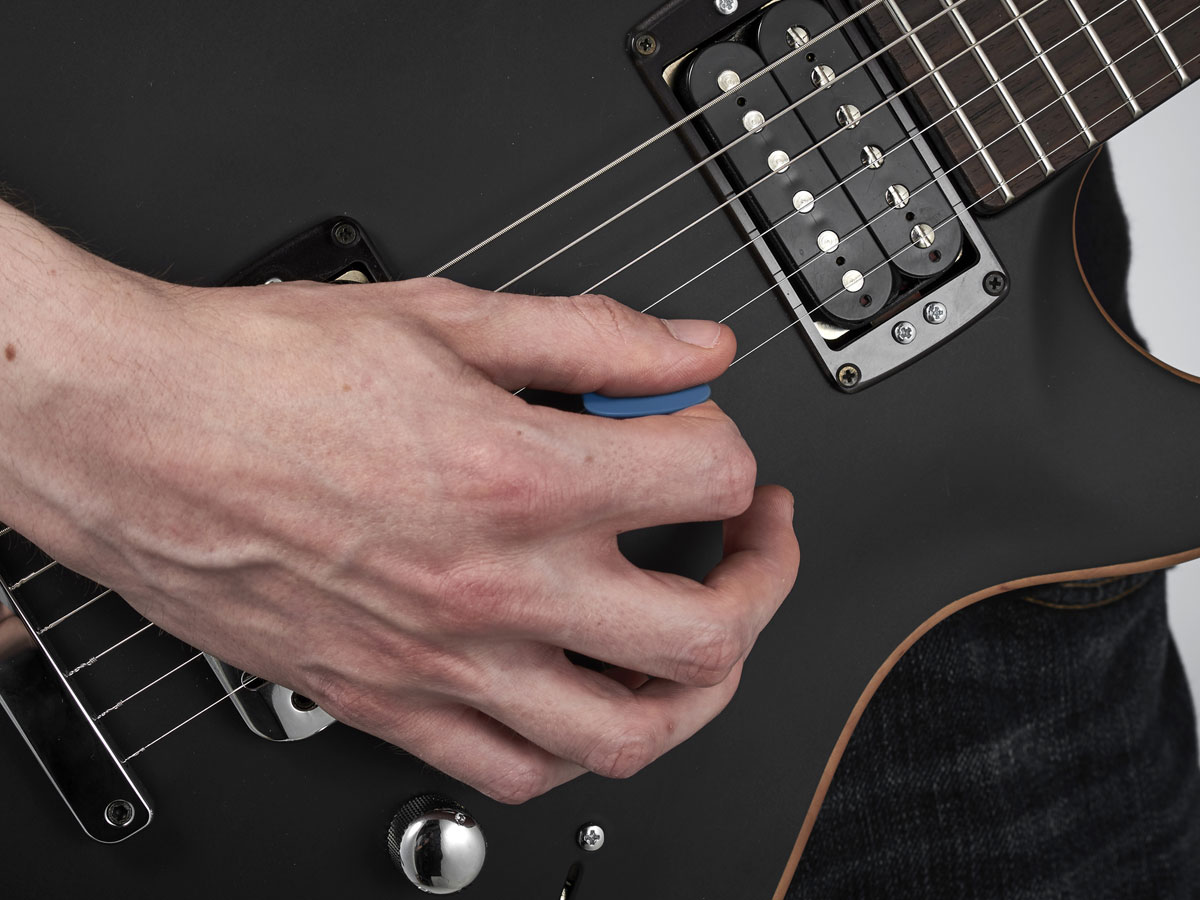
Hyper-Muse pick
Tremolo picking is all about keeping your picking hand steady at supermassive speeds, so...
- Hold your pick close to the tip to prevent the dreaded ‘flappy pick syndrome’.
- Rest against the bridge to help keep your picking hand steady...
- Get points 1 and 2 nailed so your pick doesn’t snag between strings!
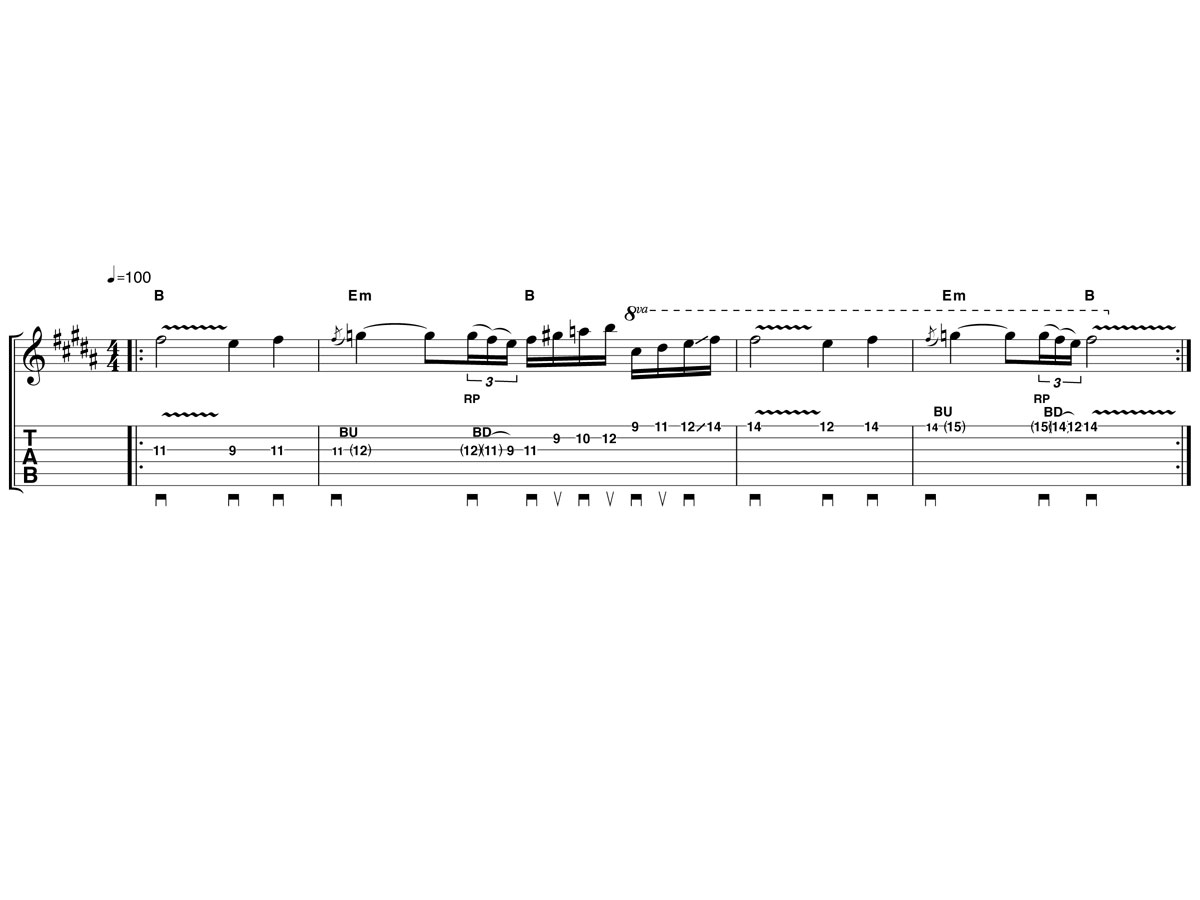
Epic melodies
Tracks such as Exogenesis Symphony have grandiose, epic-sounding melodies that showcase Matt’s Brian May influence.
Apply smooth vibrato to longer notes to give the melody a more human ‘vocal’ sound and to help the notes sustain. Fret the notes as usual and repeatedly turn your wrist back and forth to move the string up and down.
Epic melodies tab (right-click to download)
Epic melodies audio (right-click to download)
Total Guitar is Europe's best-selling guitar magazine.
Every month we feature interviews with the biggest names and hottest new acts in guitar land, plus Guest Lessons from the stars.
Finally, our Rocked & Rated section is the place to go for reviews, round-ups and help setting up your guitars and gear.
Subscribe: http://bit.ly/totalguitar
